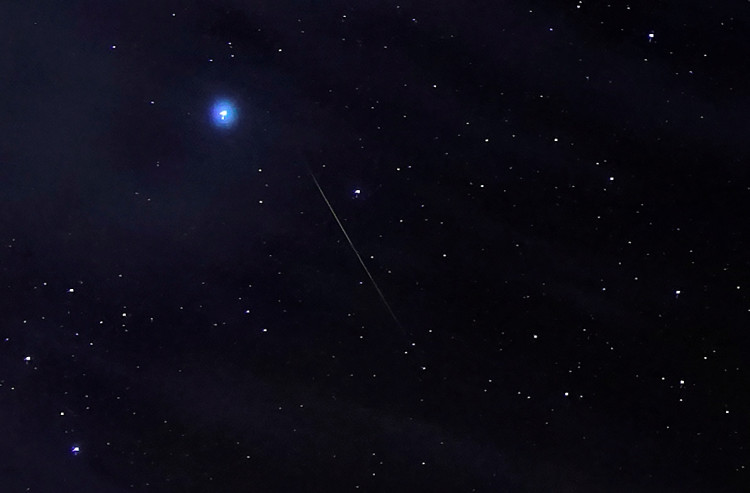The Geminid Meteor Shower - often the pinnacle of the meteor year - is predicted to peak on the night of Dec. 14 (Sunday night before dawn on Monday). Best of all, there won't be a moon to spoil the show. But don't wait until you see these meteors streaking the skies.
You can still see a good spattering of meteors on previous nights (Dec. 11-12 and Dec. 12-13). The Geminids are a very reliable shower if you watch at the peak of the night (about 2 a.m. for all areas of the globe) and if you watch in the dark sky. Meteors tend to be bold, white, and quick. This shower targets the Northern Hemisphere of the Earth, but it is also visible from the Southern Hemisphere. The curious rock comet called 3200 Phaethon is the parent body of this shower.
On a dark night near the peak, you can often catch 50 or more meteors every hour. Once again, the coming New Moon on Dec. 14 promises us dark nights for the 2020 Geminid Meteor Shower. This weekend, after a night of meteor viewing, the slender lunar crescent and the sparkling planet will eventually rise to or above the dawn of the eastern horizon.
This dazzling point of the Geminids almost corresponds with the bright star Castor in Gemini. This is a chance alignment, of course, since Castor lies some 52 light-years distant as these meteors burn up in the upper atmosphere, about 60 miles above Earth's surface.
Castor is strikingly close to another light star, the golden star Pollux of Gemini. It's exciting to spot them, but you don't need to locate the radiant point of a meteor shower to see these meteors.
Instead, in annual showers, meteors shine in all areas of the sky. It's also possible to get your back to the Gemini constellation and see a Gemini meteor flying past.
Why are Geminids brightest at 2 a.m.? It's because that's when the radiant point of the shower - the point in our atmosphere from where the meteors appear to radiate - is the strongest point in the sky. As a general rule, the higher the Gemini the Twins ascend into your atmosphere, the more Geminid meteors you're likely to see. The radiant point of Geminid is the highest at around 2 a.m.
Special tools? None of them are needed. Just find a dark, clear sky, and maybe carry a sleeping bag to stay warm. Plan to sprawl back into a hammock, a lawn chair, a bed of hay, or a rug on the grass.
Lay back in comfort, and look up.





